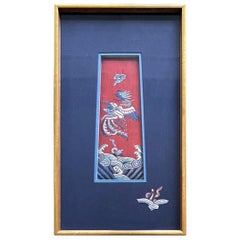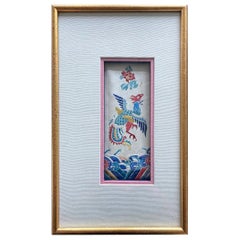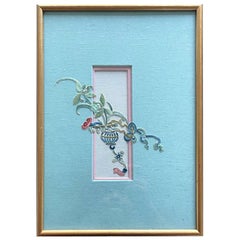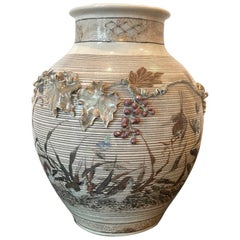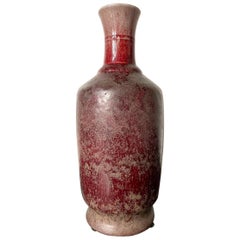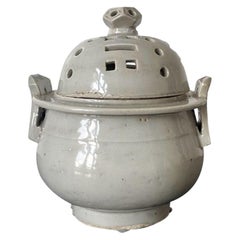TISHU Asian Art and Furniture
to
8
671
730
630
41
56
9
2
1
121
276
233
41
128
39
24
22
3
7
8
7
5
2
1
2
4
242
240
150
109
95
635
602
340
151
105
671
671
671
27
14
11
10
7
Item Ships From: Atlanta
Framed Antique Embroidery Chinese Textile Qing Dynasty Provenance
Located in Atlanta, GA
A piece of beautiful antique textile fragments from China, circa 19th century Qing dynasty, artistically displayed in a giltwood frame with co...
Category
Antique Early 19th Century Chinese Chinese Export Textiles
Materials
Silk, Giltwood
Framed Antique Embroidery Chinese Textile Qing Dynasty Provenance
Located in Atlanta, GA
A piece wonderful antique textile fragment from China, circa 19th century Qing dynasty, artistically displayed in a giltwood frame with white ...
Category
Antique 19th Century Chinese Chinese Export Textiles
Materials
Silk, Giltwood
Framed Antique Chinese Embroidery Textile Qing Dynasty Provenance
Located in Atlanta, GA
A piece of beautiful antique textile fragments from China, circa 19th century Qing dynasty, artistically displayed in a giltwood frame with contrasting teal blue color cloth matts. O...
Category
Antique 19th Century Chinese Chinese Export Textiles
Materials
Silk, Giltwood
Japanese Porcelain Vase with Relief Surface Makuzu Kozan
By Makuzu Kozan
Located in Atlanta, GA
A rare porcelain vase by Makuzu Kozan (1842-1916) circa 1870-81 (late Meiji period). The vase is dated to the earlier work from Kozan's studio during his early period (Takauki-ware p...
Category
Antique Late 19th Century Japanese Japonisme Ceramics
Materials
Ceramic
Large Antique Chinese Sang-de-Boeuf LangYao Red Vase
Located in Atlanta, GA
A large Chinese vase with Sang-de-Boeuf (oxblood) glaze in a classic baluster form with a tall narrow neck and horizontal bands around the shoulder. The oxblood glaze is known as Lan...
Category
Antique Late 19th Century Chinese Chinese Export Ceramics
Materials
Ceramic
Korean white Porcelain Ritual Incense Burner with Bagua Pattern Joseon Dynasty
Located in Atlanta, GA
An antique Korean ritual incense burner circa 19th century, late Joseon dynasty. It was made in Bunwon Kiln in Gwangju, Gyeonggi Do, near Seoul. The ceramic container has a thickly b...
Category
Antique 19th Century Korean Archaistic Ceramics
Materials
Ceramic
Unusual Japanese Lacquer Inkstone Box with MOP Inlays
Located in Atlanta, GA
A Japanese black lacquer box with mother of pearl inlays circa early 20th century, end of Meiji period. It was likely to be used to store inkstone or other scholarly items. The piece displays several interesting characteristics that appear puzzling initially. First, the form is not typical Japanese, but more Chinese and Korean, with its scalloped base. Second, the decoration of MOP inlays also suggests a Korean and Chinese affiliation, especially with the linear borders and the scrolling cloud patters on the sides of the box. These two observations suggest that the box may be from Ryukyu Island instead of Japanese mainland. Third, strikingly in the center of the cover, a bold quarterly floral pattern outlined with MOP was filled with a striking mottled red lacquer using tsugaru nuri...
Category
Early 20th Century Japanese Japonisme Lacquer
Materials
Wood, Lacquer
Japanese Maki-e Lacquer Stack Box Jubako
Located in Atlanta, GA
An antique jubako (stack boxes) with five tiers in an elongated octagon shape circa 19th century (end of Edo or beginning of Meiji period). jubako was traditionally used to store and...
Category
Antique 19th Century Japanese Japonisme Lacquer
Materials
Wood, Lacquer
Large Japanese Lacquer Plate with Elaborate Maki-e Design by Kajikawa
Located in Atlanta, GA
A large circular plate with a short stem base in Vermillion lacquer color. The surface was decorated with a stunning maki-e picture that depicts a...
Category
Antique 19th Century Japanese Japonisme Lacquer
Materials
Lacquer
Japanese Lacquer Maki-e Sake Ewer Meiji Period
Located in Atlanta, GA
A Japanese lacquered wood sake ewer with maki-e design, circa late 19th century, Meiji period. The nicely decorated lacquerware is of a Classic sake ewer for...
Category
Antique 1890s Japanese Japonisme Lacquer
Materials
Lacquer
Carved Chinese Inkstone with Longevity Symbols and Marks
Located in Atlanta, GA
A black carved Chinese inkstone with an conforming oval cover circa early 20th century (late Qing to Republic period). The inkstone appears to be slate stone and was likely a She type (SheYan), one of the four famous inkstones in China that comes from She County (Anhui Province) and Wuyuan County (Jiangxi Province). It features a slight scalloping edge with elaborate surface carving that depicts the Sanxings (three beloved gods): Fu, God of Fortune (top right), Lu, God of Prosperity (top center holding a Ruyi staff) and Shou, God of Longevity (center on the lid who is holding a magical peach and a staff with a gourd with a deer at the back) . A towering evergreen pine was placed on the left with scrolling clouds and bats (the sound of bat in Chinese is Fu, the fortune). A famous Chinese couplet...
Category
Early 20th Century Chinese Chinese Export Scholar's Objects
Materials
Stone
Korean Jakhodo Minhwa Folk Scroll Painting
Located in Atlanta, GA
A Korean Folk Art painting mounted as a hanging scroll. The watercolor on paper was likely dated from 1930s-1940s. The work depicts a "Jakhodo" theme (...
Category
Vintage 1930s Korean Folk Art Paintings and Screens
Materials
Paper
Framed Antique Chinese Child Tiger-Head Hat
Located in Atlanta, GA
This lovely textile art was from Central-Northern China circa 1900s, known as "Tiger-head" hat, it was a lavishly made cotton with silk hat in form of tiger for baby boys with a wide...
Category
Early 20th Century Chinese Chinese Export Textiles
Materials
Cotton, Silk, Plexiglass, Wood
Framed Chinese Embroidery Panel of Longevity Deities
Located in Atlanta, GA
A large Chinese embroidery work of art presented in a carved gilt frame with and silver borders, circa late Qing Dynasty 19th century. The imp...
Category
Antique 19th Century Chinese Chinese Export Textiles
Materials
Silk, Wood
Rare Large Antique Balinese Temple Hanging Lamak, Indonesia
Located in Atlanta, GA
An extraordinary "Kepeng Lamak" from Bali, Indonesia, circa early 20th century. Lamak is a general term for temple hangings, mostly made of disposable materials like palm leaves for temporary offerings. A small number, such as this piece, were made by wealthy and aristocratic families for permanent display. The lamaks are traditionally displayed in temples or residents for a strong spiritual reason in Bali that is known as "Artja". They could function as receptacles, or a vessels of for the habitation of the deities when they descent to the earth on propitious occasions.
In a goddess form with a carved wood head adorned with painted face and mirrored crown who likely represents Dewi Danu, the water goddess, this lamak was constructed with a bamboo frame, cotton pompoms, fabric fragments...
Category
Early 20th Century Indonesian Other Sculptures and Carvings
Materials
Copper
Antique Lopburi Buddha Statue from Thailand
Located in Atlanta, GA
The Buddha statue was made from a copper alloy in a standing position with hands in double Abhaya mudra. This mudra symbolizes the act of dispelling fear in the face of adversity. In Laos and Thailand where this mudra are used as one of the most iconic gestures, with its origin was pre-Buddhism era, when it was a symbol of good intentions and friendship when approaching strangers. In contrast to Indian iconography, it was often shown with both hands raised to the level of the shoulder in Southeast Asia. The statue was made in the classic Lopburi style, which historically was heavily influenced by Khmer art...
Category
Antique Late 18th Century Thai Other Sculptures and Carvings
Materials
Metal
Framed Antique Two-Piece Chinese Embroidery Winter Jacket Ensemble
Located in Atlanta, GA
This two-piece set of Chinese antique winter coat and a neck warmer ensemble circa 19th century (late Qing dynasty) is presented in two matching giltwood shadow boxes. Tailored in light auberge silk with thick padding, the attire was reserved for cold winter weather, which was common in Northern China. The surface is masterfully adorned with embroidery of silver threads. Although the color pallet was nearly minimalistic compared to many other colorful embroidery work at the time, the contrast of silver on auberge background is visually stunning and exudes a noble air of elegance. Floral and foliage motifs are showcased in neat arrangement across the coat and ocean waves and coral rocks...
Category
Antique 19th Century Chinese Chinese Export Textiles
Materials
Giltwood, Silk
Ceremonial Cape Textile Art from Hmong Miao People
Located in Atlanta, GA
An oversized and impressive cape worn during ceremonial dancing by Miao people (also known as Hmong in English) from Guizhou Province, China circa 1940s-1950s in a rarely intact and well-preserved condition. Miao people are diverse minority groups living in Southern China as well as Southeast Asia with complex sub-affiliations based on attires, languages, cultural customs and art tradition. They are renowned for their textile and silver craftsmanship as well as singing and dancing traditions. This cape, rather heavy in construction and striking in bold red and black, was made from wool, hemp and cotton. The surface showcases elongated diamond patterns in complementary woven wool and couched plaque on top of the cotton part. The pattern strikes the viewer with a strong sense of dignity and power. The heavy material and pattern are strangely akin to some of the Navajo weaving. The cape is in a form a jacket with long and wide sleeves, and it was meant to be used in ceremonial occasions.
Our research reveals that the piece was from the Northwest Guizhou in an autonomous county called Weining. The area is of subtropical highland and the generally cold weather was reflected in the heavy materials used in this piece, in comparison with other textiles made in the warmer lowland.
There is an older paper label with price tag in Chinese inside the cape. It was purchased in Guizhou decades ago by a US collection in MA. With a span of over 94 inches long, it makes a very impressive textile art piece for wall hanging. Not framed and easily shipping folded up.
For a similar jacket from Weining, see "Miao Textile...
Category
Mid-20th Century Chinese Tribal Textiles
Materials
Textile
Set of Four Japanese Maki-e Lacquered Pedestal Dishes
Located in Atlanta, GA
A set of four Japanese shallow footed bowls or dishes in red lacquer with predominantly gold Makie design circa 1920s-1930s Taisho period. Each was decorated with hiramakie painting of different motifs, mostly gold, black and pewter color. One with a temple drum...
Category
Vintage 1920s Japanese Japonisme Lacquer
Materials
Wood, Lacquer
Antique Brocade Kesa Monk's Patched Robe Edo Period
Located in Atlanta, GA
Kesa, known as "Jiasha" in Chinese and "Kasaya" in Sanskrit, is an out layer garment worn by the ordained Buddhist monks. Bearing a basic rectangular form, it developed originally in...
Category
Antique Late 18th Century Japanese Edo Textiles
Materials
Textile, Brocade
Antique Japanese Textile Art Campaign Jacket Jinbaori with Mon
Located in Atlanta, GA
Known as Jinabori during 16th century when warfare was common in feudal Japan, the sleeveless jacket was created to be worn outside of the armor by samurai warriors. In addition to s...
Category
Antique 19th Century Japanese Japonisme Textiles
Materials
Textile, Silk
Framed Japanese Antique Phoenix Dragon Embroidery Tapestry Meiji Period
Located in Atlanta, GA
A visually stunning Japanese embroidery tapestry circa 1890s-1900s late Meiji period, presented with a linen matt with gold trim in a gilt wood frame. The design showcases a flying p...
Category
Antique 1890s Japanese Japonisme Textiles
Materials
Silk, Giltwood
Japanese Ink and Wash Scroll Painting by Watanabe Seitei
Located in Atlanta, GA
Watanabe Seitei, also known as Watanabe Shotei (1851–1918), was born in late Edo period. He was one of the earliest Japanese artists who visited and be...
Category
Antique Early 1900s Japanese Japonisme Paintings and Screens
Materials
Brocade, Silk, Paper
Collection of Three Chinese Neolithic Pottery
Located in Atlanta, GA
A collection of three small Chinese Neolithic pottery jars consisting a red slender jar with large double ears, a grey and wide short jar wit...
Category
Antique 15th Century and Earlier Chinese Archaistic Ceramics
Materials
Ceramic
Antique Burmese Carved Architectural Wood Pole
Located in Atlanta, GA
A striking architectural pole carved from solid teak that was used for building construction in Burma circa 19th century. Serving both structural and ornamental purposes, this types of carved poles...
Category
Antique 19th Century Burmese Folk Art Sculptures and Carvings
Materials
Wood
Framed Japanese Relief Embroidery Textile Art of Dragon
Located in Atlanta, GA
A beautiful Japanese textile art panel with an embroidered dragon on a swirling cloud background, nicely framed with a linen matt in an antique-fi...
Category
Antique 1890s Japanese Japonisme Textiles
Materials
Silk, Wood
Pair of Framed Japanese Embroidery Art Portraits
Located in Atlanta, GA
Artistically framed for display in a slight shadow frame with non-reflective pixie glass, these pair of embroidery art panels from Japan are dated circa 1910-1930s, end of Meiji to early Taisho period. This period was the peak of the Japanese oversea expositions, when all things Japonisme took Europe and America by storm and left long-lasting impact on western art and design. The influence, however, was clearly not one-directional; As when Japanese artists, artisans and dealers experienced western art, it in turn inspired and impacted on the aesthetics of the Japanese art made for the western tastes. An interesting crop of art forms quickly emerged with a particular outlook that bridged the east and west, with the fundamental techniques still rooted in Japanese traditions. These rare hyper-realistic embroidered portraits were such an example. They took the essential format of the western portrait that permeated the Victoria and Edwardian Society, but substituted with exotic Japanese subjects and executed in traditional embroidery techniques which had been perfected for centuries by the natives.
The two portraits on offer, one an elder man with long white beards and a pair of round spectacles lighting a pipe, and the other a grinning man with a peasant attire, were both set in black background, stimulating an appearance of Classic western oil painting or perhaps even the photograph. The fine stiches were maneuvered into an impressively hyper-realistic imagery that was far removed from the traditional Japanese embroidery...
Category
Early 20th Century Japanese Japonisme Textiles
Materials
Silk, Wood
Framed Korean Official Portrait Joseon Dynasty
Located in Atlanta, GA
A hyper realistic portrait of an official with watercolor on silk bordered panel, framed in dark wood, from Korean late Joseon dynasty, circa 19th century. The beard man sitting with a formal frontal view, displays a benevolent facial expression, in keeping with the Confucius value of the officialdom at the time. He dons a black linen official hat and a blue silk robe...
Category
Antique 19th Century Korean Other Paintings and Screens
Materials
Silk, Wood
Korean Ceramic Celadon Bowl with Slip Inlay Goryeo Dynasty
Located in Atlanta, GA
Despite inspired originally by the celadons from Song Dynasty in China, the development of celadon in Korean peninsula took its own course and reached the Zenith in the 11-12th century during Goryeo dynasty...
Category
Antique 15th Century and Earlier Korean Archaistic Ceramics
Materials
Ceramic
Korean Ceramic Celadon Bowl with Slip Inlay Goryeo Dynasty
Located in Atlanta, GA
Despite inspired originally by the celadons from Song dynasty in China, the development of celadon in Korean peninsula took its own course and reached the zenith in the 11-12th century during Goryeo dynasty...
Category
Antique 15th Century and Earlier Ceramics
Materials
Ceramic
Celadon Ceramic Tea Bowl Korean Goryeo Dynasty
Located in Atlanta, GA
An antique Korean ceramic tea bowl with celadon glaze from Goryeo dynasty, circa 12th century. The thin-walled stoneware bowl was potted delicately with...
Category
Antique 15th Century and Earlier Korean Archaistic Ceramics
Materials
Ceramic
Korean Celadon Inlay Vase Goryeo Dynasty
Located in Atlanta, GA
On offer is an antique Korean ceramic vase from the end of Goryeo to the beginning of Joseon period (circa 14-15th). The vase features celadon crackled glaze with underglaze inlay design in black and white. The vase was a transitional piece made toward the end of Goryeo to the beginning of Joseon Yi dynasty...
Category
Antique 15th Century and Earlier Korean Archaistic Ceramics
Materials
Ceramic
Korean Celadon Inlay Plate Goryeo Period
Located in Atlanta, GA
The round ceramic plate with a slightly raised foot ring is dated from late Korean Goryeo Kingdom (918 to 1392 AD) likely toward the end of the 14th century. The plate features a celadon glaze and underglaze slip inlays in black and white. The inlays showcases a pair of bird (appears to be cranes) in the center of a radiating double walled ring...
Category
Antique 15th Century and Earlier Korean Archaistic Ceramics
Materials
Ceramic
Modern Studio Vase Bizen Ware by Jun Isezaki
Located in Atlanta, GA
A bottle form vase by Japanese studio ceramic artist Jun Isezaki (Born in 1936). A modern Bizen yaki stoneware piece that is strongly rooted in history and ...
Category
20th Century Japanese Organic Modern Ceramics
Materials
Ceramic, Wood
Chinese Export Silver Dragon Serving Tray
Located in Atlanta, GA
An elaborately decorated silver serving dish or butler's tray, likely dated to the turn of the 20th century, made in China for the export market. The round tray has a solid center in...
Category
Early 20th Century Chinese Chinese Export Metalwork
Materials
Silver
Korean Ceramic Celadon Deep Bowl Goryeo Dynasty
Located in Atlanta, GA
A ceramic bowl with celadon glaze from Korea, circa 14th century (late Goryeo Dynasty). The particular shape of the bowl suggests that it is likely a "Bo" (Chinese) or "Hattara" (Japanese "Oryoki"). This is a Buddhism term derived from Sanskrit word "patra", which means "vessel that contains just enough". The container was used traditionally by Buddhist monks to ask for alms (donated foods by laymen). The deep volume and the wide opening are conducive to its utility function. The bowl is covered in a jade-color celadon which has very fine and uniform crackles throughout. Upon close inspection of the exterior wall, one can detect a very light brush of white slip circumventing the body. The white slip brushing technique only became popular from 15th century on as a landmark of the Buncheong ceramics...
Category
Antique 15th Century and Earlier Korean Archaistic Ceramics
Materials
Ceramic
Large Antique White Glazed Bottle Vase Korean Ceramic Joseon Dynasty
Located in Atlanta, GA
On offer is a Korean ceramic bottle vase circa 19th century made in the late Joseon dynasty (1392-1910). The vase is of a classic bottle form with a bulbous body and a long neck with...
Category
Antique 19th Century Korean Other Ceramics
Materials
Ceramic
Chinese Blue and White Porcelain Vase from Modern Official Kiln
Located in Atlanta, GA
Dubbed as production of the "Chinese Modern Official Kiln", a small group of porcelains of the highest standard were produced in Jingdezhen from 1962-1967, The production was aimed as a revival of the Chinese porcelain after the foundation of the Republic in 1949 in order to serve the purpose of decorating the meeting halls for the newly renewed diplomatic relations around the globe. The best available materials and artists, including the painters and potters, were employed to achieve a high quality that rivaled the pieces produced during the pinnacle years in the porcelain production in the previous Qing dynasty. Due to the breakout of the Cultural Revolution, most of the pieces failed to be used as intended. Most if not all signatures, such as found on this vase, were added later as a hallmark to distinguish them. "Zhong Nai Hai Huai Ren Tang Treasures Porcelain Research Bureau year of 1962". Zhong Nai Hai is the residential and working compound for Chinese political elites in Beijing and Huai Ren Hall being an important meeting hall.
The pieces from "Modern Official Kiln" ubiquitously showcase perfectly balanced forms with precision in symmetry. The use of very high quality Gaolin clay resulted in a semi translucent body, often quite thinly potted. The superbly underglaze paint were sandwiched between a pre-applied glaze and then an overglaze, and the elaborate designs were drawn by master painters. Often, there is a hidden red Chinese National Emblem on the interior wall. These features were all well reflected in this piece. The decoration of the blue paint on the vase is of a classic regal composition and the cobalt blue is of a vivid radiating color. Blooming peonies, an old laurel tree with blossom and scholar rocks provide the background and anchor for a pair of pheasants. One raises its head to crow while the other one looks down. These motifs are commonly found in classic Chinese scroll paintings, a genre called "Flower and Bird Painting". On the back of the vase, there are Chairman Mao's head portrait watermarked in the glaze as well as a cursive poem with a collection number as shown.
For a pair of blue and white vase of the same production, see sale by Singapore International Auction PTE ltd on July 21st, 2019 lot 2014.
For a pair of blue and white urns...
Category
Vintage 1960s Chinese Modern Ceramics
Materials
Porcelain
Pair of Large Antique Japanese Hokai Lacquer Boxes
Located in Atlanta, GA
A pair of Japanese lacquer lidded Hokai boxes with chased brass hardware and original ropes. Hokai boxes are traditionally used in Japan to store and carry s...
Category
Early 20th Century Japanese Japonisme Lacquer
Materials
Wood, Lacquer
Large Japanese Lacquer Tray with Maki-e Carp Design Meiji Period
Located in Atlanta, GA
A large rectangular tray with scalloped corners and slightly raised gallery rim circa late 19th century to early 20th century (end of Meiji period). The center image showcases a live...
Category
Early 20th Century Japanese Japonisme Lacquer
Materials
Lacquer
Japanese Woven Bamboo Ikebana Basket
Located in Atlanta, GA
A Japanese woven bamboo basket with handle from early 20th century, circa end of Meiji to Taisho period. The basket was constructed in the form o...
Category
Early 20th Century Japanese Japonisme Sculptures and Carvings
Materials
Bamboo
Framed Japanese Futon Cover Textile Art with Resist Yuzen Dye
Located in Atlanta, GA
A large piece of framed Japanese textile circa late 19th to early 20th century, end of Meiji period. Seamed together from four vertical sectio...
Category
Early 20th Century Japanese Meiji Textiles
Materials
Cotton, Wood
Framed Japanese Embroidery Textile Panel Rootsters
Located in Atlanta, GA
A matted and framed Japanese silk panel with elaborate embroidery circa late Meiji to Taisho period (1910-30s). On a bright background, two rooster...
Category
Early 20th Century Japanese Japonisme Textiles
Materials
Silk, Wood
Framed Antique Japanese Silk Embroidery Fukusa Textile Panel
Located in Atlanta, GA
A Japanese Fukusa Panel with tassels displayed in a gilt frame circa Meiji Period. Fukusa is a traditional Japanese textile art used as a...
Category
Antique Late 19th Century Japanese Meiji Textiles
Materials
Silk, Wood
Antique Korean Ceramic Bowl with Incised Design
Located in Atlanta, GA
A Korean stoneware bowl from Goryeo dynasty circa 12th century. The conical form bowl with a small raised foot rim is covered in a celadon green glaze...
Category
Antique 15th Century and Earlier Korean Archaistic Ceramics
Materials
Ceramic
Antique Japanese Export Silk Embroidery Panel of American Union
Located in Atlanta, GA
A rather fascinating silk embroidery panel that depicts an American eagle perched on a shield, with laurel branches and shooting arrows under the...
Category
Antique Late 19th Century Japanese Japonisme Textiles
Materials
Silk, Wood
Ceramic Bowl Buncheong Ware Joseon Dynasty
Located in Atlanta, GA
A Buncheong (also spelled as Punch'ong) stoneware tea bowl from Korea Joseon Dynasty circa 15-16th century. The conical shape bowl in the classical styl...
Category
Antique 16th Century Korean Archaistic Ceramics
Materials
Ceramic
Korean Ceramic Celadon Bowl with Slip Inlay Goryeo Dynasty
Located in Atlanta, GA
The celadon bowl on offer here was likely dated to the 14th century toward the end of Goryeo Dynasty, after the production quality reached its zenith during 11-12th century. The bowl...
Category
Antique 15th Century and Earlier Korean Archaistic Ceramics
Materials
Ceramic
Korean Ceramic Celadon Bowl with Slip Inlay Goryeo Dynasty
Located in Atlanta, GA
A good Korean celadon bowl with elaborate slip inlays circa 12-13th century from the Goryeo Dynasties (918 to 1392AD). Despite inspired originally ...
Category
Antique 15th Century and Earlier Korean Archaistic Ceramics
Materials
Ceramic
Japanese Shigaraki Jar for Ikebana by Shiho Kanzaki
By Shiho Kanzaki
Located in Atlanta, GA
A Shigaraki stoneware jar by Japanese potter Shino Kanzaki (1942-2018). Kanzaki is a world renowned potter in Shigaraki who based his modern work on the ancient tradition of Shigaraki and Iga ware...
Category
20th Century Japanese Modern Ceramics
Materials
Ceramic
Japanese Ceramic Ikebana Vase Bizen Ware Nanba Koyo
Located in Atlanta, GA
A tall vintage ceramic vase with handle from Japan (20th century) by Nanba Koyo. Made in the tradition of Bizen ware, the vase has a modern aesthetic with a...
Category
20th Century Japanese Japonisme Ceramics
Materials
Ceramic
Japanese Echizen Ceramic Tsubo Fujita Jurouemon VIII
Located in Atlanta, GA
A Japanese storage jar (tsubo) made in the ancient Echizen ware tradition by Fujita Jurouemon VIII. Echizen is one of the six ancient kilns in Japan, directly influenced by the Sue ware...
Category
20th Century Japanese Modern Ceramics
Materials
Ceramic
Korean Four Panel Screen of Hunting Scene Joseon Dynasty
Located in Atlanta, GA
A Korean four-panel folding screen circa 1830s, from the late Joseon Dynasty. The painting depicts a vivid hunting scene on four vertical scroll panels mounted with brocade borders. The four panels are related to each other in narrative but not in an absolutely continuous fashion, therefore they could be viewed individually and independently, which was not uncommon in the screen paintings as they are meant to be folded and unfolded as needed. The pictures show a general on the far left panel seated on a low platform bed...
Category
Antique Mid-19th Century Korean Other Paintings and Screens
Materials
Brocade, Wood, Paper
Japanese Fukusa Relief Embroidery Textile Art of Dragon
Located in Atlanta, GA
A visually stunning Japanese fukusa panel with an embroidered dragon on a swirling cloud background, nicely displayed on a scarlet felt matt in a carve...
Category
Antique 1890s Japanese Japonisme Textiles
Materials
Silk, Wood
Korean Ceramic Tea Bowl with Slip Inlays Goryeo Dynasty
Located in Atlanta, GA
A small ceramic conical form tea bowl from Korean Goryeo Dynasty circa 14th century. The bowl is of a slightly irregular shape and covered in a grayish overglaze. The inlaid slip dec...
Category
Antique 15th Century and Earlier Korean Archaistic Ceramics
Materials
Ceramic
Rare Chinese Scholar Rock Wuling Stone on Stand
Located in Atlanta, GA
An unusual Chinese scholar stone originated from Wuling Mountains, Hunan Province in central China. A type of geological wonder, formed through wind erosion and polishing by the elem...
Category
20th Century Chinese Chinese Export Scholar's Objects
Materials
Stone
Japanese Silk Scroll Painting of Moneys Edo Period Mori Tetsuzan
Located in Atlanta, GA
A Japanese mounted vertical hanging scroll painting by Mori Tetsuzan (Japanese, 1775-1841) circa 19th century Edo period. The watercolor and ink on silk ...
Category
Antique 19th Century Japanese Japonisme Paintings and Screens
Materials
Silk, Paper
Antique Korean Ceramic Bowl with Carved Design Goryeo Dynasty
Located in Atlanta, GA
A Korean stoneware bowl from Goryeo dynasty circa 12th century. The conical form bowl with a small raised foot rim is covered in a celadon green glaze. ...
Category
Antique 15th Century and Earlier Korean Archaistic Ceramics
Materials
Ceramic
Korean White Ceramic Stem Dish Joseon Dynasty
Located in Atlanta, GA
A ceramic dish with high cylindrical foot in white glaze from Korea, circa 19th century Joseon Dynasty. By shape, this piece is most likely a ceremonial vessel that was used to make offerings on the altar. Although without inscription, we can't rule out that it could be a household item for occasions that were less formal. Such as a private shrine in the household. During Joseon dynasty, the social morals were largely centered on the principles of Confucianism that originated from China. Many ritual ceramic wares were produced for rituals and worships on all level of the society. The ware were often modeled after the archaic bronze ware that elevated them from the aesthetic of daily use pieces. High foot dish like this were made in both round and square shape to suite different use but they were all distinguished with the inscription for their exclusive ceremonial purpose.
Of elegant form and harmonious proportion, this stem dish...
Category
Antique 19th Century Korean Archaistic Ceramics
Materials
Ceramic
Framed Japanese Oshi-E Textile Art Meiji Period from a Rare Large Set
Located in Atlanta, GA
On offer is the last one of the set of seven framed Japanese textile art called Oshi-E circa Meiji Period (1868-1912). This rare set consists ...
Category
Antique 1890s Japanese Japonisme Textiles
Materials
Silk, Giltwood
